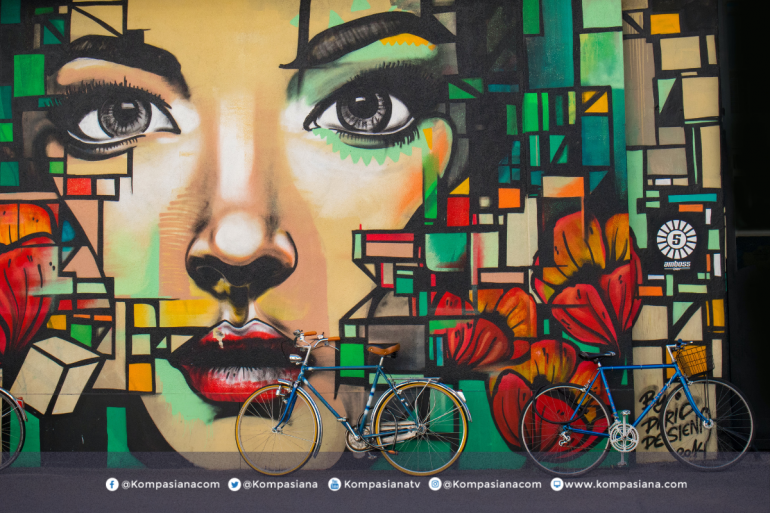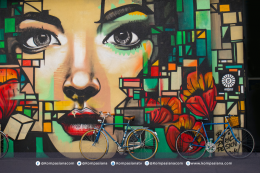What is a logo and why do you need one?
A logo is a visual symbol that represents your business, product, service or organization. It can be a wordmark, an icon, a combination of both, or any other graphic element that conveys your brand identity. A logo helps you stand out from the competition, communicates your values and personality, and creates a memorable impression on your customers and prospects.
A logo is not just a pretty picture. It is a powerful tool that can influence how people perceive and interact with your business. A well-designed logo can:
* Increase brand awareness and recognition
* Build trust and credibility
* Enhance customer loyalty and retention
* Attract new customers and referrals
* Differentiate you from your competitors
* Support your marketing and advertising efforts
How to design a logo for your business?
Designing a logo for your business can be a fun and creative process, but it can also be challenging and overwhelming. There are many factors to consider, such as your target audience, your brand message, your industry standards, your competitors' logos, and your personal preferences. Here are some steps to guide you through the logo design process:
Research your market and competitors. Before you start sketching ideas, you need to understand who you are designing for and what they expect from your logo. Research your target market, their needs, preferences, and pain points. Analyze your competitors' logos, their strengths and weaknesses, and how you can differentiate yourself from them.
Define your brand identity and message. Your logo should reflect your brand identity and message, which are the core elements of your business. Your brand identity is how you want it to be perceived by your customers and prospects. Your brand message is what you want to communicate to them.
Think about your mission, vision, values, personality, tone of voice, and unique selling proposition (USP). Brainstorm logo ideas and concepts. Now that you have a clear idea of what you want to achieve with your logo, you can start generating ideas and concepts. You can use various methods to spark your creativity, such as mind mapping, word associations, mood boards, online tools, or inspiration from other logos.
Try to come up with as many ideas as possible, without judging or filtering them at this stage. Choose the best logo type for your business. There are different types of logos that you can choose from, depending on your brand identity and message.
Here are some common logotypes:
Wordmark: A wordmark is a logo that consists of the name of the business in a stylized font. It is simple, elegant, and easy to remember. Examples of wordmark logos are Google, Coca-Cola, FedEx, and Netflix.
* Icon: An icon is a logo that consists of a graphic symbol or image that represents the business or its products or services. It is versatile, expressive, and memorable. Examples of icon logos are Apple, Nike, Twitter, and McDonald's.
* Combination: A combination logo is a logo that combines a wordmark and an icon into one design. It is the most popular type of logo because it offers the benefits of both wordmark and icon logos. It is descriptive, distinctive, and adaptable. Examples of combination logos are Adidas, Starbucks, Amazon, and BMW. Select the best colors for your logo.
Colors play an important role in logo design because they can evoke different emotions and associations in people's minds. They can also help you convey your brand identity and message more effectively. Here are some general guidelines for choosing colors for your logo:
* Use colors that match your brand identity and message. For example, if you want to communicate professionalism, trustworthiness, and reliability, you might choose blue as your main color. If you want to communicate creativity, innovation, and fun, you might choose purple or orange as your main color.
* Use colors that stand out from your competitors. You don't want to mix in with the crowd or confuse your customers with similar-looking logos. You want to create a unique and recognizable identity for your business. Therefore, avoid using colors that are already used by your competitors or by other businesses in your industry.
* Use colors that work well together and create contrast. You don't want to use too many colors or colors that clash with each other in your logo design. You want to create harmony and balance in your logo design. Therefore, use colors that complement each other and create contrast between the foreground and the background.
Choose the best fonts for your logo. Fonts are another important element of logo design because they can affect the readability and legibility of your logo text. They can also help you express your brand identity and message more clearly. Here are some tips for choosing fonts for your logo:
* Use fonts that match your brand identity and message. For example, if you want to communicate elegance and sophistication, you might choose a serif font. If you want to communicate modernity, simplicity, and minimalism, you might choose a sans-serif font. * Use fonts that are legible and scalable.
You want your logo text to be easy to read and recognize at any size and on any platform. Therefore, avoid fonts that are too thin, too thick, too ornate, or too distorted. Choose fonts that are clear and consistent, and that work well with your logo icon and colors.
* Use fonts that complement each other. If you use more than one font in your logo design, make sure they harmonize well and create contrast. For example, you can pair a bold font with a light font, or a serif font with a sans serif font. Avoid using fonts that are too similar or too different from each other.
Test your logo on different platforms and contexts. Before you finalize your logo design, you need to make sure it works well on different platforms and contexts. For example, you need to check how your logo looks on:
* Different devices and screen sizes. Your logo should be responsive and adaptable to different devices and screen sizes, such as desktops, laptops, tablets, smartphones, smartwatches, etc. You can use online tools or mockups to test your logo on various devices and see how it performs.
* Different backgrounds and colors. Your logo should be versatile and flexible to different backgrounds and colors, such as white, black, gray, or any other color that matches your brand identity. You can use online tools or mockups to test your logo on a different background and see how it stands out.
* Different materials and products. Your logo should be suitable and applicable to different materials and products, such as paper, plastic, metal, wood, fabric, etc. You can use online tools or mockups to test your logo on different products and see how it looks. Get feedback from your target audience and stakeholders. The last step in the logo design process is to get feedback from your target audience and stakeholders. This will help you validate your logo design and make any necessary adjustments before launching it. You can get feedback from: * Your target audience.
The most important feedback you can get is from your target audience because they are the ones who will interact with your logo the most. You can use online tools or surveys to collect feedback from your potential customers and see how they react to your logo design.
* Your stakeholders. The second most important feedback you can get is from your stakeholders, such as your partners, investors, employees, or anyone else who has an interest in your business. You can use online tools or meetings to collect feedback from your stakeholders and see how they support your logo design.
Conclusion:
Logo design is a crucial part of creating a brand identity for your business. A good logo can help you attract more customers, increase brand awareness, and grow your business. To design a good logo for your business, you need to follow some basic steps:
* Research your market and competitors
* Define your brand identity and message
* Brainstorm logo ideas and concepts
* Choose the best logo type for your business
* Select the best colors for your logo
* Pick the best fonts for your logo
* Test your logo on different platforms and contexts
* Get feedback from your target audience and stakeholders
By following these steps, you can create a logo that represents your business well and sets you apart from the competition.
Follow Instagram @kompasianacom juga Tiktok @kompasiana biar nggak ketinggalan event seru komunitas dan tips dapat cuan dari Kompasiana. Baca juga cerita inspiratif langsung dari smartphone kamu dengan bergabung di WhatsApp Channel Kompasiana di SINI







